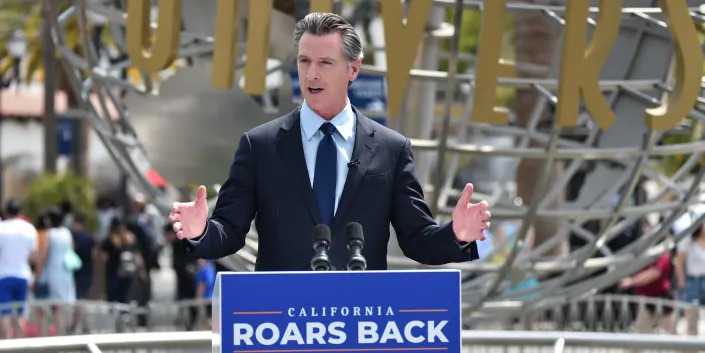Bob Mason
Mon, January 31, 2022
At the turn of the year, Bitcoin (BTC) mining has once again faced the scorn of lawmakers. The increased level of interest followed Bitcoin’s surge to a November ATH $68,979. Rising prices draw in greater mining activity, thus having “a greater impact on the environment”.
Bitcoin Mining and Government Action
Last summer, the Chinese government banned Bitcoin mining as the government looks to be carbon neutral by 2060. Other governments have since temporarily or permanently banned crypto mining. These include Kosovo and Georgia, with Russia’s central bank also proposing to ban crypto mining.
Last month, a U.S Congress sub-committee hearing explored crypto mining, focusing on Bitcoin and Proof-of-Work mining. From the hearing, it was evident that lawmakers leaned against Proof-of-Work mining, which could prove to be another challenge for Bitcoin miners. According to Cambridge Centre for Alternative Finance, the U.S was the largest Bitcoin mining nation, accounting for 35.4% of the global hashrate in August 2021.
Bitcoin Mining Statistics Support Government Concerns
For governments with carbon neutral aspirations, the statistics have continued to place Bitcoin mining in the spotlight. Some key mining stats worth considering include:
According to Columbia Climate School, Bitcoin (BTC) is thought to consume 707KwH per transaction. In addition, there are also mining computers that heat up and need cooling.
The University of Cambridge estimated that Bitcoin (BTC) mining consumes 121.36 terawatt-hours (TWh) per year. Based on this estimate, if Bitcoin were a country, it would be a top 30 energy consumer.
Estimates show that Bitcoin (BTC) mining yields 22m to 22.9m metric tons of CO2 emissions each year.
In terms of global warming, Bitcoin (BTC) mining could push global warming above 2 degrees centigrade in less than 3-decades.
The following numbers were presented in last month’s crypto mining sub-committee briefing memorandum:
The estimated annual energy usage of the Bitcoin network alone grew from 77.78 Terawatt-hours (TWh) on 2nd January 2021 to more than 198 TWh on 26th November 2021.
Over the same period, the Ethereum (ETH) network’s annual energy usage grew from 14.81 TWh to more than 92 TWh.
A single ETH transaction added more than 90 pounds of CO2 to the atmosphere, while a single BTC transaction added more than 1,000 pounds.
The global 2021 CO2 emissions of ETH and BTC mining is equivalent to tailpipe emissions from more than 15.5m gasoline powered cars on the road every year.
U.S Climate Aspirations Point to Action on Bitcoin Mining
President Joe Biden announced a new target for the U.S “to achieve a 50-52% reduction from 2005 levels in economy-wide net greenhouse gas pollution in 2030”. Upon taking office, President Biden rejoined the Paris Agreement, aiming to tackle the climate crisis both domestically and abroad. The U.S has a goal of reaching net zero emissions by 2050.
The EU has also voiced concerns, with European Securities and Markets Authority (ESMA) vice-chair Erik Thedeen calling for a ban on Proof-of-Work mining. As was evident on Capitol Hill, Thedeen was also in favor of Proof-of-Stake protocols due to the “significantly lower energy profile”.
U.S Mining Activity Rises Amidst Lawmaker Scrutiny
At the start of the week, CoinShares published a paper titled “The Bitcoin Mining Network, Energy and Carbon Impact”. Key statistics from the paper included:
Total known power draw of global mining countries (Dec-2021) had the U.S ranked 1st, with a power draw of 1,380 MW. Kazakhstan ranked 2nd, with a power draw of 787 MW, followed by Canada (529 MW), and Russia (268 MW).

The Bitcoin mining network emitted 36 Mt of CO2 in 2020 and 39 Mt in 2021. This accounts for less than 0.08% of a global total 49,360 Mt CO2 emissions.
To put things into perspective, CoinShare also provided the following facts and figures:
The U.S and China had emitted 5,830 Mt and 11,580 Mt of CO2 emissions in 2016 respectively.
Emissions estimates for minting and printing fiat currency sit at approximately 8 Mt of CO2 emissions per year.
The gold industry is estimated to generate between 100 and 145 Mt of CO2 emissions annually.
For the global banking system, power usage estimates sit at 264 TWh (2019). This translates to 130 Mt of CO2 emissions each year.
While U.S mining activity has been on the rise, the latest facts and figures reflect a very contrasting view to that of the University of Cambridge, Columbia Climate school, and numbers shared by the sub-committee hearing in January. The numbers suggest that lawmakers will need to carry out further study before imposing restrictions or outright bans on Proof-of-Work mining.
This article was originally posted on FX Empire






